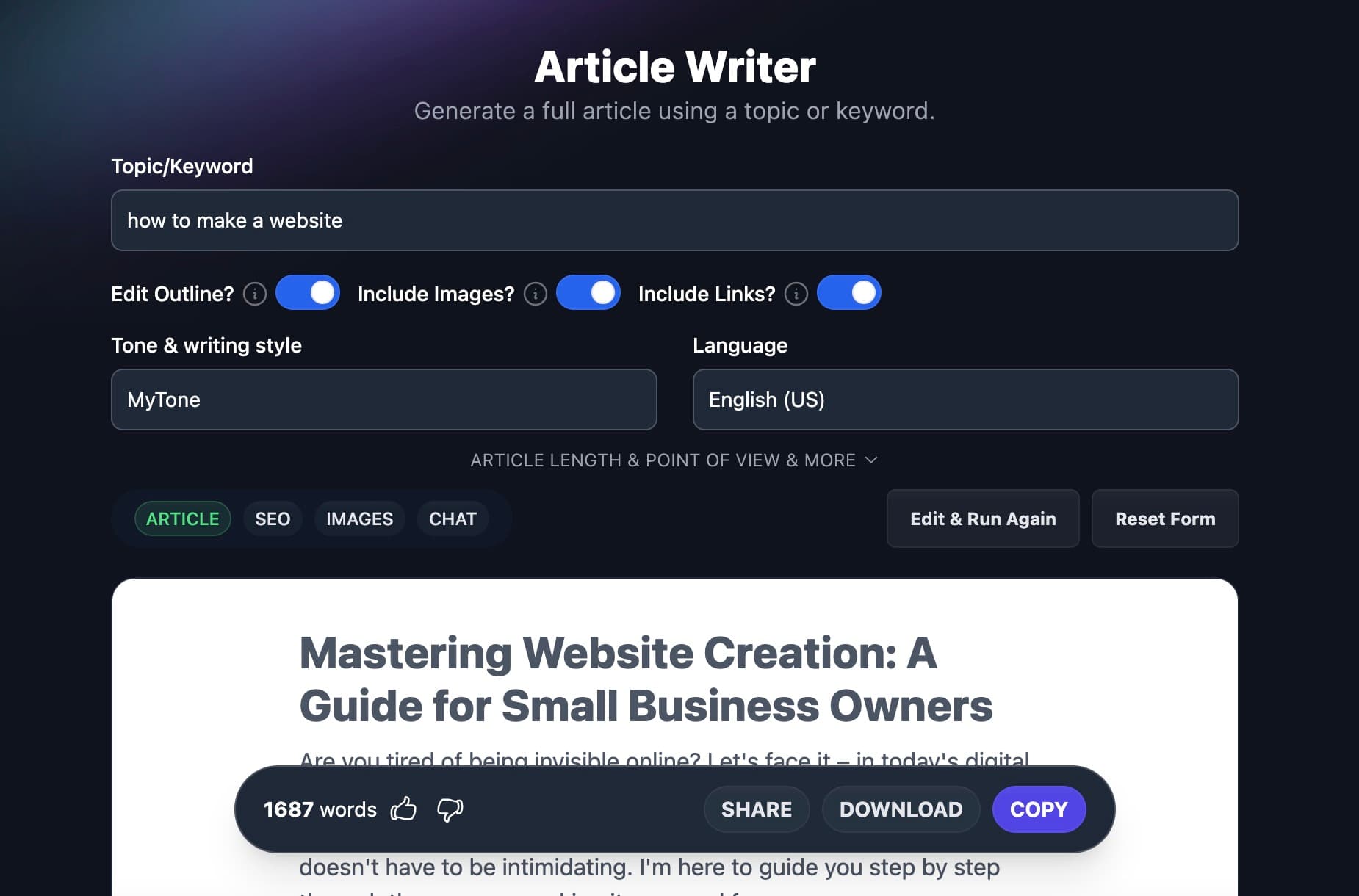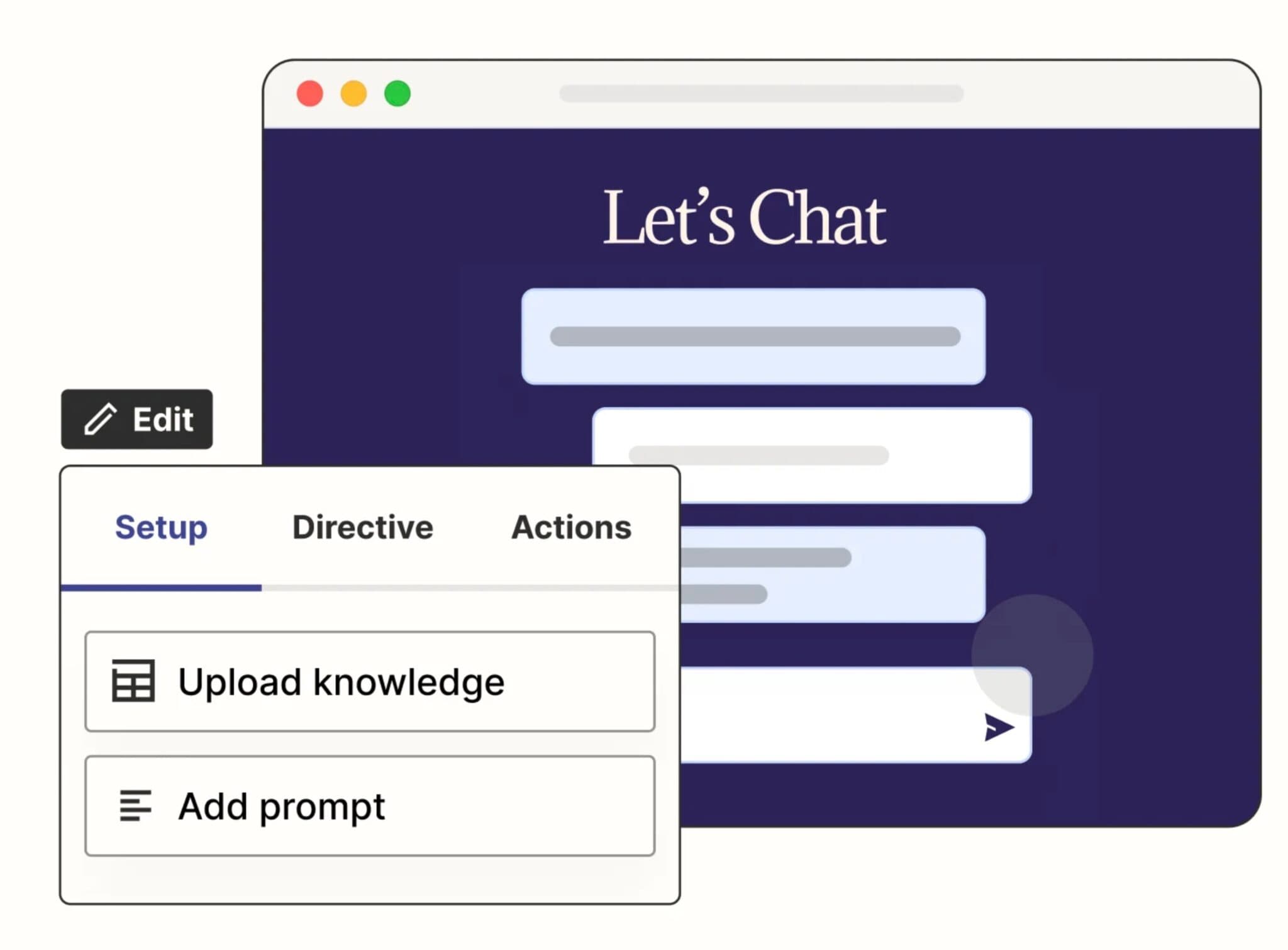AI in eCommerce: 6 Great Ways to Grow with AI Tools

As eMarketer forecasts, by 2024, an estimated 2.71 billion people will shop online, which constitutes about a third of the global population. Like it or not, you’ll wanna learn how to leverage AI in eCommerce today.
This surge reflects a growing trend that could bring significant challenges—and opportunities—to eCommerce businesses worldwide. If your eCommerce operation is currently thriving, it’s likely to face scaling challenges as market participation intensifies. Enters AI in eCommerce.
This guide explores the pivotal role of AI in optimizing eCommerce operations as we see this continued surge in online shopping growth. We’ will discuss’ll cover six smart ways you can deploy AI to enhance efficiency and scalability in your business. We’ll wrap by shedding light on potential pitfalls to avoid and how to use these tools without losing your brand’s identity along the way.
6 Applications of AI in eCommerce
The following are the most practical ways to use AI to streamline your eCommerce business operations and get a better outcome.
1. Product Description Writing
Creating compelling product descriptions can be a major bottleneck, especially when you have hundreds or thousands of listings on your storefront.
Traditionally, you only had two options in this department:
- Write each product description yourself
- Hire a copywriter
Both options are time-consuming and costly, with the former also involving significant opportunity costs.
Instead of writing product descriptions the traditional way, let AI streamline this process for you. AI tools can generate bulk product descriptions faster and ensure that your listings are appealing to customers and SEO-optimized.
This’ll also free up your resources and eliminate backlogs since AI can produce hundreds of descriptions in a fraction of the time it would take to write them manually. Unlike the varied copywriting quality you might get from different writers, AI provides a consistent voice that adheres to your brand’s standards and optimizes copy for search engine visibility.
Take RightBlogger, for example. Aside from creating compelling product descriptions, RightBlogger also allows you to upload MyTones—which learn from and emulate your tone of voice for every piece of content you generate.

Once your MyTone is set up, AI tools require minimal oversight, significantly reducing both direct and indirect costs associated with product descriptions. Here’s an example of a product description we just wrote using RightBlogger in a matter of seconds:

This is a perfect use case for AI that has the potential to save you a ton of time as an eCommerce business operator.
You’ll still want to review all of your AI product descriptions, fact-check, and weave in your own favorite bits about each product, but having a solid first draft is super helpful when you’re doing product descriptions at scale.
2. Content Creation
Beyond generating product descriptions, you have a continuous need for diverse types of content, including blog articles, advertisements, and social media engagement, to reach and interact with your target audience effectively.
The never-ending demand for high quality, compelling content is a fundamental component of your overall digital marketing success.
AI tools simplify the creation, editing, enhancement, and distribution of content across various channels. For instance, in blogging, AI can generate informative, SEO-driven posts that increase user engagement and suggest relevant topics your audience will be interested in.

It has the same effect on ad creation, A/B testing, social media content, content distribution, etc.
For your content creation needs, be sure to try our tools—we got our start specializing in AI for bloggers, YouTubers, writers, and marketers.
3. Chatbots
Deploying an AI chatbot is another way AI can help you grow your eCommerce business.
When chatbots provide timely assistance and help customers find what they need quickly, they simplify the buying process and reduce the usual frustrations that lead to abandoned carts.
With an average cart abandonment rate of 70.19%, abandoned carts can flatline your income and ruin your business. You need to reduce it as much as possible.
With chatbots, your eCommerce store can offer continuous customer support. Whether it’s answering FAQs, assisting with order tracking, or making product recommendations, chatbots handle it all—anytime, day or night.
This constant availability improves customer service and ensures overall customer satisfaction.

Some chatbots are particularly effective at boosting sales; they can instantly add products to a customer’s cart during a conversation, which reduces browsing time and directly enhances the likelihood of a sale.
Additionally, they learn from interactions to understand customer preferences and recommend products tailored specifically to individual tastes.
And when you integrate chatbots with various social media platforms, they grant an omnichannel experience that keeps customers engaged and makes your brand accessible across all fronts, at less cost.
There are many eCommerce chatbot tools out there that can help you, including:
- Intercom: for responding to bulk inquiries
- Chatfuel: for integration with different social media platforms
- ProProfs Chat: for automating customer support
4. Dynamic Pricing
Traditional pricing systems in eCommerce relied on historical data and manual adjustments to remain competitive. These systems, often dependent on ERP software and Excel sheets, are effective to a degree but tend to be slow to react to market changes.
However, AI-driven pricing systems use advanced technologies such as machine learning and predictive analytics. These systems are capable of analyzing large datasets, which include competitors’ prices, demand fluctuations, and external factors like economic conditions and weather changes, all in real time.
For instance, major online retailers like Amazon and Walmart leverage AI to dynamically adjust prices multiple times throughout the day. This method responds to changes in competitor pricing and inventory levels and aligns with real-time demand.
The use of AI in pricing extends beyond mere speed. It contributes significantly to customer satisfaction and a competitive edge by enabling personalized pricing strategies.
These strategies can offer targeted discounts to specific segments to build up customer engagement and loyalty. Moreover, AI systems help you avoid the pitfalls of manual errors and the limitations of slow processing that traditional methods face when dealing with vast amounts of data.
This enables you to offer the right price at the right moment and optimize your revenue.
Pricefx is one of the most effective tools for this previously complex task.
5. Personalized Product Recommendations
AI-driven product recommendations offer numerous benefits for eCommerce business owners, including:
- A better understanding of customers
- Improved user experience
- Higher customer engagement
- Increased average order value and online revenue
- Enhanced overall shopping experience
This results in increased profits, efficiency, and an improved customer experience.

Two common ways to personalize recommendations are through content-based and user-based filtering systems. Content-based filtering analyzes the content of items and matches it with the preferences of users, while user-based filtering analyzes the behavior of similar users to recommend products.
Hybrid recommendation filtering combines these approaches to provide more accurate and effective recommendations. Collaborative filtering is the most common way to personalize recommendations, using algorithms to identify patterns in user behavior and preferences.
That’s exactly what AI does. Coveo is an example of an AI tool that does this really well.
6. Inventory Management
Maintaining an optimal inventory balance isn’t child’s play. Traditional methods often lead to inaccuracies such as overstocking, which ties up valuable capital, or stockouts, which drive customers to competitors.
However, AI can manage inventory processes effectively.
One way is through demand forecasting, which AI does by analyzing vast amounts of data, such as historical sales, market trends, and external influences such as seasonal changes or economic shifts.
This advanced analysis helps predict demand patterns with high accuracy, so you can optimize your inventory levels. By preparing adequately for potential sales surges without overstocking, you minimize holding costs and reduce the waste associated with unsold stock.
This also ensures that popular products are well-stocked and available for prompt delivery. Eventually, this reliability will prevent customers from turning to competitors and destroying your financial goals.
inFlow Inventory and Katana are AI-powered inventory management software that you can try out.
Benefits of AI in in eCommerce
We’ve explored various applications of AI in eCommerce, highlighting their benefits. Now, let’s look at these benefits, examining them one by one to provide a clearer context for eCommerce storefront owners.

Here are some key benefits of AI in eCommerce:
Targeted Marketing and Advertising
AI’s superb ability to mine data enables it to develop a deep understanding of the types of customers a business reaches and how best to connect with them.
Using AI in your marketing efforts will give you some level of precision in your targeting and product description copy.
The goal is to ensure that marketing efforts are not wasted on uninterested audiences but are instead focused on prospects that are most likely to convert. This, combined with effective copy, will improve your bottom line.
Enhancing Customer Retention Through Customer Support
Thanks to recent advancements in generative AI, automated customer support systems are evolving to become more sophisticated and responsive.
Some AI chatbots now provide instant support, addressing customer queries and concerns with promptness. What sets AI-powered chatbots apart is their ability to emulate natural human conversation, which makes interactions less mechanical and more engaging.
This capability improves the speed of response and enhances the quality of communication, which makes automated replies seem thoughtful and relevant. This level of human-like interaction helps in maintaining a pleasant customer experience, significantly contributing to customer satisfaction and loyalty.
Streamlining the Sales Process
AI’s impact on the sales process is profound; it uses real-time data and trend analysis to optimize sales forecasts and inventory management.
Unlike traditional methods that rely solely on historical data, AI’s predictive capabilities allow for adjustments based on real-time information and a myriad of factors affecting sales.
This dynamic approach to forecasting significantly reduces the chances of stock-outs and overstock situations, ensuring that the sales process is efficient and meets market demand accurately.
Drawbacks of AI in eCommerce
While AI offers numerous benefits to e-commerce, like enhancing the customer experience and streamlining operations, its implementation is not without challenges.
Here are some potential drawbacks you may face when integrating AI into your e-commerce strategies:
Erosion of Trust
One major downside of not getting AI implementation right is that it can erode customer trust. If interactions powered by AI feel cold or seem like they don’t quite grasp what the customer needs, it can leave customers unhappy and less trusting of the brand.
This dip in confidence might lead to a decrease in customer loyalty, which can negatively affect sales and profits.
So, it’s crucial to set up your AI chatbots thoughtfully to avoid frustrating your customers. Make sure that the chatbot swiftly hands off the conversation to a human agent instead of dragging the interaction unnecessarily. Also, restrict the chatbot’s tasks to functions it has been thoroughly trained on and can handle competently. This way, the chatbot can perform efficiently in scenarios where it’s most needed, enhancing the overall customer experience.
Information Overload
AI systems are exceptional at handling and analyzing massive amounts of data—much more than what humans can manage.
However, this capability can sometimes backfire. If not carefully controlled, AI can bombard users with an overload of information, which can be overwhelming for both customers and business managers alike. This barrage of data can complicate the decision-making process, negatively impacting the user experience and diminishing the potential efficiencies that AI is meant to guarantee.
To prevent this, tailor AI applications to specific tasks. Ensure that these systems are configured to operate within their scope of training and not beyond it. This targeted approach helps maintain focus and provides the right amount of data needed for decision-making without overwhelming users. This way, AI can be a tool that simplifies processes rather than complicates them.
Cost of Implementation
Lastly, the cost of implementing AI can be prohibitive, especially for small to medium-sized enterprises (SMEs). The initial investment in technology, infrastructure, and talent can be substantial.
Additionally, ongoing maintenance and updates require further resources, which can strain budgets.
Consider these costs against the potential benefits AI can bring, and look for scalable and cost-effective AI solutions that offer a tangible return on investment.
AI in eCommerce: What Should You Do Next?
You’re now familiar with the practical applications of AI in eCommerce, its benefits, and the potential drawbacks. If budget constraints hold you back, consider a phased approach to adopting AI.

Start by identifying the areas in your eCommerce operations that need the most improvement—areas where AI can make a significant impact.
For instance, if your marketing budget is tight, begin by implementing AI tools for content creation, managing ads, and enhancing product descriptions. Once you see positive results from these initial efforts, you can gradually invest in AI for other processes like inventory management and dynamic pricing.
To get started without any financial commitment, try using RightBlogger’s Product Description Generator. It’s available for free, and no credit card is required. This step-by-step approach makes AI adoption more affordable and allows you to scale your operations efficiently based on your business’s specific needs and growth.
How can AI help me write better product descriptions faster?
AI can draft product descriptions in seconds, so you can list more items without getting stuck writing copy all day.
The best results come when you give the AI the basics first: product name, key features, who it is for, and the main benefits. Then you review, fact-check, and add a few brand details to make it sound human.
If you want consistent writing across hundreds of products, train your voice once and reuse it. RightBlogger’s MyTone voice training helps keep descriptions on-brand, and the AI Product Description Generator can speed up first drafts at scale.
Will AI content hurt my SEO or make my store look “generic”?
AI content can rank well and still feel unique, but only if you edit it and make it specific to your products and customers.
Avoid copying the same template for every item. Add real details like sizes, materials, use cases, shipping info, and what makes your product different.
A simple workflow is: generate a draft, check facts, add your brand voice, and include keywords naturally. You can also use an SEO checklist and optimize your on-page basics like titles and meta descriptions.
What should an eCommerce chatbot do to reduce cart abandonment?
A good eCommerce chatbot should answer questions fast and help shoppers finish the purchase with less friction.
Start with high-impact tasks like FAQs, order tracking, return policy questions, and product suggestions based on what the shopper is viewing. If someone seems stuck, the chatbot can guide them to the right product or support page.
Do not try to make the chatbot handle everything. Set clear limits and add a quick handoff to a human when needed, so customers do not feel ignored or confused.
What is dynamic pricing, and is it only for big companies like Amazon?
Dynamic pricing means adjusting prices based on real-time factors like demand, competitor prices, and inventory levels.
You do not need to change prices every hour to benefit. Even small stores can use smarter pricing rules to avoid selling out too fast, reduce slow-moving stock, or stay competitive in key categories.
The goal is simple: offer the right price at the right time while protecting your profit. Start with a few products and test changes before applying it store-wide.
How can RightBlogger help my eCommerce marketing content (blogs, ads, and SEO)?
RightBlogger helps you create marketing content faster by turning ideas into drafts you can publish and promote.
For blog content, you can use the RightBlogger AI Article Writer to produce SEO-friendly posts that support your products and answer customer questions. This keeps your store visible in search and gives you content to share on social media.
For paid marketing, RightBlogger also helps you draft and test messages faster with the AI Ad Copy Generator. A good workflow is to create a few variations, pick the strongest angle, then refine it with real product details and proof points.
Article by Ali Faagba
Ali Faagba is a content strategist for B2B SaaS brands like Close, Copysmith, and Userpilot. He writes on AI, automation, and sales.
New:Autoblogging + Scheduling
Automated SEO Blog Posts That Work
Try RightBlogger for free, we know you'll love it.
- No Card Required
- Blog Posts in One Click
- Unlimited Usage





Leave a comment
You must be logged in to comment.
Loading comments...